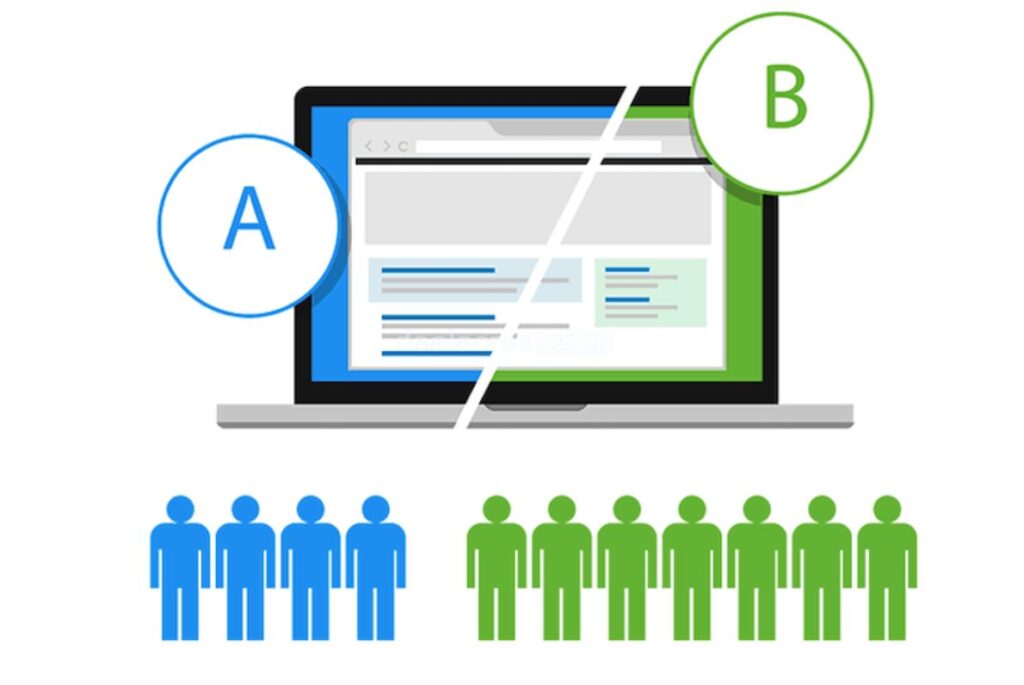Introduction:
In the vast and ever-evolving landscape of digital marketing, success is often a result of fine-tuning and optimizing strategies. One powerful tool that marketers use to enhance their campaigns is A/B testing. A/B testing, also known as split testing, allows marketers to experiment with different elements of their campaigns to identify what resonates best with their audience. In this article, we’ll delve into the art of A/B testing, exploring what it is, why it matters, and providing practical insights into how you can leverage this technique to refine your campaigns and achieve greater success.

Understanding A/B Testing:
What is A/B Testing?
A/B testing involves comparing two versions of a webpage, email, ad, or any other marketing asset to determine which performs better. The two versions, A and B, differ by a single variable, known as the variable under test. The goal is to analyze the performance metrics of both versions and identify which one yields better results.
Key Components of A/B Testing:
- Control Group (A): This is the original or existing version, considered the control. It serves as a baseline against which the variant is compared.
- Variant (B): This is the modified version that includes changes to the variable under test. The performance of the variant is compared to the control to determine the impact of the change.
- Randomization: To ensure unbiased results, users are randomly assigned to either the control or variant group. This helps eliminate external factors that could skew the data.
Why A/B Testing Matters:
- Optimizing Conversions:
- A/B testing is a powerful tool for improving conversion rates. By testing different elements, such as headlines, images, or call-to-action buttons, marketers can identify what resonates best with their audience and drives more conversions.
2. Data-Driven Decision-Making:
- A/B testing provides concrete data on how changes impact user behavior. This data empowers marketers to make informed decisions based on real-world performance rather than relying on assumptions.
3. Continuous Improvement:
- The iterative nature of A/B testing encourages a culture of continuous improvement. Marketers can continually refine and enhance their strategies, ensuring that their campaigns stay relevant and effective over time.
4. Reducing Guesswork:
- Instead of relying on guesswork or gut feelings, A/B testing allows marketers to validate their hypotheses with tangible evidence. This reduces the risk of implementing changes that may not resonate with the audience.

Practical Insights into A/B Testing:
- Identify Your Goal:
- Before starting an A/B test, clearly define your goal. Whether it’s increasing click-through rates, improving sign-up conversions, or enhancing engagement, a well-defined goal will guide the testing process.
2. Choose the Right Elements to Test:
- Focus on testing one variable at a time to isolate its impact. Elements commonly tested include headlines, images, colors, call-to-action buttons, and overall layout. Testing multiple variables simultaneously can make it challenging to pinpoint the cause of any observed changes.
3. Create Variations with Purpose:
- When designing your variant, make changes with a specific purpose in mind. Understand the user behavior you aim to influence, and tailor your changes accordingly. For instance, if you want to increase clicks, focus on elements that directly impact user interaction.
4. Randomize and Segment Your Audience:
- To ensure unbiased results, randomize the assignment of users to the control and variant groups. Additionally, consider segmenting your audience based on relevant criteria, such as location or demographics, to uncover insights specific to different user groups.
5. Sufficient Sample Size:
- Ensure your test has a sufficient sample size to draw statistically significant conclusions. A small sample size may lead to unreliable results. Tools like online calculators can help determine the required sample size for your test.
6. Monitor Relevant Metrics:
- Track key performance indicators (KPIs) that align with your goal. Whether it’s conversion rates, click-through rates, or engagement metrics, monitoring the right indicators will provide insights into the effectiveness of your changes.
7. Run Tests for an Adequate Duration:
- Run your A/B tests for a long enough duration to capture variations in user behavior over time. This helps account for factors like day-of-week or time-of-day patterns that may influence results.
8. Statistical Significance:
- Pay attention to statistical significance to ensure that your results are not due to random chance. Tools and calculators can help you determine whether the observed differences are statistically significant.
9. Implement Successful Changes:
- Once you’ve identified a winning variation, implement the successful changes across your entire campaign or website. Continuously monitor performance to ensure the positive impact is sustained.
Challenges and Considerations:

- Drawing Meaningful Insights:
- Interpreting A/B test results requires careful consideration. Ensure you understand the context of the changes and avoid drawing conclusions based on isolated or short-term observations.
2. Balancing Speed and Accuracy:
- Striking the right balance between obtaining results quickly and ensuring statistical accuracy is crucial. Rushed tests may lead to inconclusive or unreliable findings.
3. External Factors:
- External factors such as seasonality, holidays, or external events can impact user behavior. Consider these factors when interpreting test results and, if possible, run tests over extended periods to account for such variations.
4. Overlooking Long-Term Effects:
- A/B testing often focuses on immediate impact, but it’s essential to consider long-term effects. Some changes may have a delayed impact or could affect user behavior over an extended period.
Conclusion:
A/B testing is not just a tool; it’s a strategic approach that empowers marketers to refine their campaigns, optimize user experiences, and achieve greater success. By adopting a data-driven mindset and continuously experimenting with different elements, marketers can uncover valuable insights into user behavior and preferences. Whether you’re a seasoned marketer or just starting, incorporating A/B testing into your toolbox will elevate your campaigns, making them more effective, engaging, and aligned with the evolving needs of your audience. The art of A/B testing is a journey of discovery, improvement, and, ultimately, success in the ever-evolving landscape of digital marketing.




